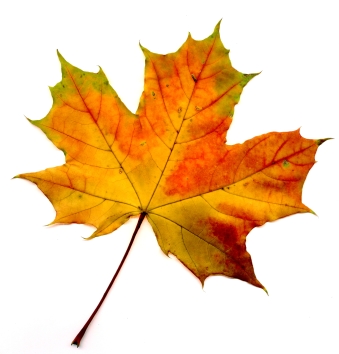 Oh, leaves. There’s so much we love about you. The first sight of your flowers in the spring; the sound you make when you blow in the breeze during summer; your brilliant shades of red, yellow, and orange come fall. And then you drop to the ground and become another thing on our to-do list.
Oh, leaves. There’s so much we love about you. The first sight of your flowers in the spring; the sound you make when you blow in the breeze during summer; your brilliant shades of red, yellow, and orange come fall. And then you drop to the ground and become another thing on our to-do list.
If this sounds familiar, don’t fret—we can help. Before you break out the rake, check out our top 5 uses for fall leaves.
Leave Them Be
Why: Leaves act as a home for many different types of beneficial insects (ground and rove beetles, spiders, caterpillars), as well as amphibians such as wood frogs. A layer of leaves also serves as a root protection for trees and shrubs by keeping in moisture and moderating the temperature of the soil. And if that’s not reason enough, you will also attract more birds, which rely on leaves for shelter, nesting material, and water.
How: Leave behind a thin layer of leaves in areas that people don’t walk on (you wouldn’t want anyone slipping). If you’re worried about your grass being smothered, chop the leaves with a lawn mower.
Good to know: Researchers from Michigan State University have found that chopped leaves left on lawns may actually help suppress dandelions.
Make Mulch
Why: A less expensive and taxing option to raking, bagging, and disposing, leaf mulch mimics a natural forest ecosystem, making for excellent nutrient recycling.
How: When the leaves begin to fall, mow your lawn as you normally would. This will shred the leaves, making them decompose faster and a bit easier to pack around the bases of plants. In vegetable and perennial gardens, you can keep the leaves whole, and then turn them over come spring. Or, if you like, you could rake them and put them in a shredder.
Good to know: Songbirds love leaf mulch since it harbors lots of nutritious bugs!
Compost Them
Why: Any gardener can extol the merits of compost. Good compost requires a mix of high nitrogen (grass clippings, food waste) and high carbon components. The best bet for the latter? Fallen leaves.
How: Scoop them up whole and add them to your compost pile. Not only do they add bulk but leaves make for good aeration. Don’t have a compost pile yet? Leaves are a great way to get started. To speed up the decomposing process, you can shred them a little.
Good to know: Leaves that have been left on the ground for awhile bring useful decomposing microorganisms to the compost pile. A good excuse to put off the yard work!
Have Fun With Them
Why: There’s nothing more thrilling than jumping into a big pile of leaves (and that goes for both kids and adults). Note: Be aware of ticks. Wear light colored clothes and check yourself for ticks after playing outside.
How: In addition to a good old-fashioned leaf pile, you can make a scarecrow, add leaves to vases or window boxes, preserve brightly colored fallen leaves, or make leaf rubbings.
Good to know: Some people believe it’s good luck to catch a falling leaf before it touches the ground. Slap the lucky leaf against your forehead, turn around in three complete circles, and then make a wish!
Learn More About Them
Why: Think a leaf is simply just a leaf? Think again. There are compound and simple leaves, broad leaves and needle leaves, leafstalks, leaf teeth, and leaf veins. By learning more about the leaves you see every day, you will gain more appreciation for the natural world around you.
How: Pick up one of the countless books written on the subject. A few of our favorites, which can be found at the Mass Audubon Shop at Drumlin Farm in Lincoln, include: The Sibley Guide to Trees, National Geographic Kids Ultimate Explorer Field Guide: Trees, and Trees of Eastern North America.
Good to know: While we now know science is behind leaves changing color, countless legends have been linked to this fall phenomenon, including Native American lore that said when the Great Bear in the sky was killed, the bear’s blood fell on the forests, turning some of the leaves red.
Photo via iStockPhoto


All the leaves get composted in the back, always
good for the environment
We iron the prettiest leaves between two sheets of wax paper and hang them in the windows like stained glass.